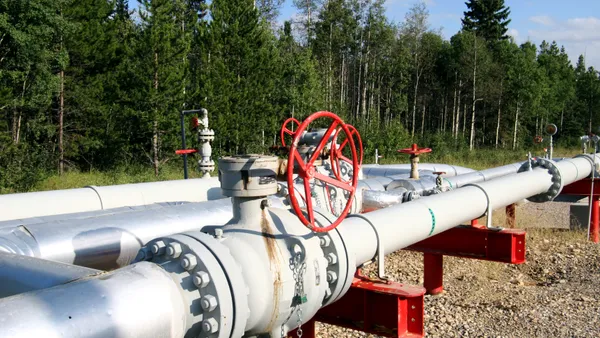Dive Brief:
- Google has tapped Kairos Power to develop, build and operate a 500-MW fleet of advanced nuclear power plants by 2035, with the first set to come online by 2030, the companies said Monday.
- Google will purchase “energy, ancillary services, and environmental attributes” from the plants, which will be located “in relevant service territories to supply clean electricity to Google data centers,” Kairos said.
- “Our partnership with Google will enable Kairos Power to quickly advance down the learning curve as we drive toward cost and schedule certainty for our commercial product,” Kairos Power co-founder and CEO Mike Laufer said in a statement.
Dive Insight:
The tech giant’s agreement with Kairos will provide power needed for emerging artificial intelligence technologies while advancing a “clean, round-the-clock power source” that can rapidly decarbonize electricity grids, Google Senior Director for Energy and Climate Mike Terrell said Monday in a company blog post.
Computing demand from AI models and other data-intensive applications is expected to sharply increase data centers’ electricity demand in the coming years. Data centers could consume 9% of U.S. electricity in 2030, the Electric Power Research Institute said in May, potentially threatening grid reliability and the pace of the transition to a cleaner energy mix.
Google in March joined with Microsoft and Nucor, a North Carolina-based steelmaker, on a request for information for projects advancing clean, firm power sources, including advanced nuclear.
Google wants its operations to be carbon-neutral by 2030. Microsoft has a more ambitious goal of becoming “carbon negative, water positive and zero waste by 2030…[and removing] the equivalent of all historical emissions by 2050,” according to the RFI’s website.
Microsoft last month announced a 20-year power purchase agreement with Constellation Energy to support renewed operations at Three Mile Island unit 1, which shut down its 835-MW reactor in 2019. The refurbished plant would power Microsoft data centers in PJM Interconnection territory beginning in 2028, Constellation said.
The U.S. Department of Energy’s Pathways to Commercial Liftoff: Advanced Nuclear report, first released in early 2023 and updated last month, emphasized the importance of demand aggregation from large power consumers to enable serial deployments of new nuclear reactors by the early 2030s while driving down development costs.
“This early commitment from Google provides a strong customer demand signal,” Kairos Power Vice President of Business Development and Finance Jeff Olson said in a statement.
The Google-Kairos agreement will “support technology development by extending Kairos Power’s iterative demonstration strategy through its first commercial deployments…[b]uilding on progress from the early iterations, each new plant will enable continued learning and optimization to support accelerated commercialization,” Kairos said.
Kairos Power is building two low-power test reactors in Oak Ridge, Tennessee, and expects the first to come online in 2027. Its molten fluoride salt-cooled reactors operate at much higher temperatures than conventional nuclear reactors and use TRISO, a novel fuel form produced from high-assay, low-enriched uranium.
The Monday announcement does not say where Kairos will site the power plants built under its agreement with Google or how many individual reactors it will build. But DOE earlier this year said existing U.S. nuclear sites — whose environmental and safety attributes are already well understood by the U.S. Nuclear Regulatory Commission — could support up to 95 GW of new reactor capacity.
The same DOE report found even greater potential for siting new nuclear capacity — up to 174 GW — at U.S. coal power plants. Another advanced nuclear technology company, TerraPower, is building a 345-MW commercial demonstration reactor near the site of a coal plant in southwestern Wyoming.
Correction: A previous version of this story had an incorrect amount for how much new reactor capacity DOE estimates could be added to existing U.S. nuclear sites. It is 95 GW.














